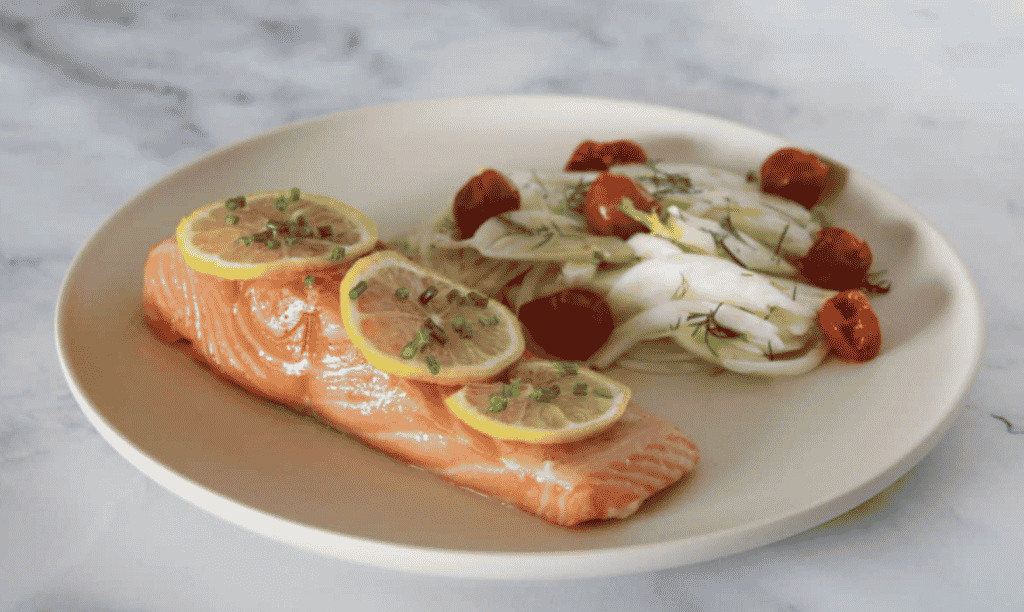What is sous vide?
Sous vide is a relatively new and trendy cooking method that involves vacuum-sealing food in a plastic bag that is immersed in a low-temperature water bath. It’s a French term meaning under vacuum, which makes sense considering the food is vacuum-sealed in an airtight bag before being submerged into a water bath for cooking. The sous vide method has been around for a while now primarily in higher-end restaurants; however, it’s only recently gained popularity in the market of at-home cooks.
Many cooks today admit that the sous vide method is their personal favorite, as it maintains the food’s natural flavors and integrity. Ultimately this also means little to no prep work is required when using this cooking method such as tenderizers, marinades, or seasonings. This method also provides consistently cooked and delicious food each time, especially once you’ve mastered the cooking technique!
What foods can I cook using the sous vide method?
There is a large misconception today that the sous vide cooking method is only to be used when cooking meats. However, this is beyond far from the truth. The sous vide cooking technique can be used to cook just about anything and everything you could imagine. The first step in getting started is to determine what you want to cook. For newbies, this is where some research may come into play as to what they can cook, or what are some good meal ideas for those first trying out the sous vide technique. Listed below are a few easy and delicious fan favorites when it comes to getting started.
Steak
When people think of the sous vide method, their minds typically immediately jump to steaks. Steaks are one of those meats that it’s hard to cook wrong. Many people prefer their steaks to be flavorful and a little more on the underdone side. The sous vide technique is great for cooking steaks, as it helps to retain the natural flavors of the steak as well as that rare to medium-rare interior. Many people prefer to slightly undercook their steaks using the sous vide method, then sear them in a cast-iron skillet or on the grill. This provides that charred and crunchy exterior all while maintaining the juicy and flavorful center.
Tougher Cuts of Meat
Tougher cuts of meat such as chicken, pork, turkey, and duck are typically cheaper, primarily because of their difficulty to cook properly. They are typically more prone to becoming dry and overcooked when compared to their more expensive alternatives. However, the good thing about the sous vide method is that tougher cuts of meat are just as good, if not better when cooked using the technique. This is primarily because the tougher cuts of meat typically house more flavor, and when they are cooked low and slow all day, those flavors are released. The tougher muscles and tendons are also broken down with this method. Again, searing is a great option after cooking these tougher cuts of meat to add some more flavor and char to the meat.
Eggs
When thinking of trying out a new cooking method, I’m sure that eggs aren’t the first thing to jump to your mind. However, eggs are a great food to try out, especially for sous vide beginners. According to Serious Eats, sous-vide eggs are one of the easiest and best things to cook using the sous vide method! It’s no secret that eggs cook relatively quickly and can become overcooked far easier than other foods. Because of this, consistency is also hard to obtain while cooking eggs. However, the sous vide method is perfect for cooking your eggs to their exact desired consistency. What’s even better is that eggs are self-contained in their shells, so they don’t require being vacuum-sealed!
Vegetables
The sous vide method helps to lock in the natural flavors and nutrients typically found in vegetables such as carrots, corn, broccoli, asparagus, and so on. The truth is vegetables are a great option when it comes to sous vide cooking. The water bath helps to cook the vegetables until they are crisp but still tender. This even includes vegetable roots that are typically hard and difficult to chew. The sous vide method also helps to retain the vegetable’s natural flavors and juices, meaning they aren’t as prone to being bland and flavorless as other cooking methods often result in.
Is any special equipment required?
Another benefit of cooking using the sous vide technique is that hardly any special equipment or utensils are required. As long as you have a Ziploc-style bag that can be used for vacuum sealing, and a larger pot to submerge your food into, that’s all that is required. However, if you really develop a knack for cooking sous vide, you may be interested in purchasing an immersion circulator that helps to both set and regulate the temperature of the water in your cooking vessel.
Although there is a large misconception that the sous vide method is only to be used for meats, that is beyond far from the truth. The sous vide method can be used to cook just about anything and everything you could think of. The first step to becoming sous vide professional is to get started!

